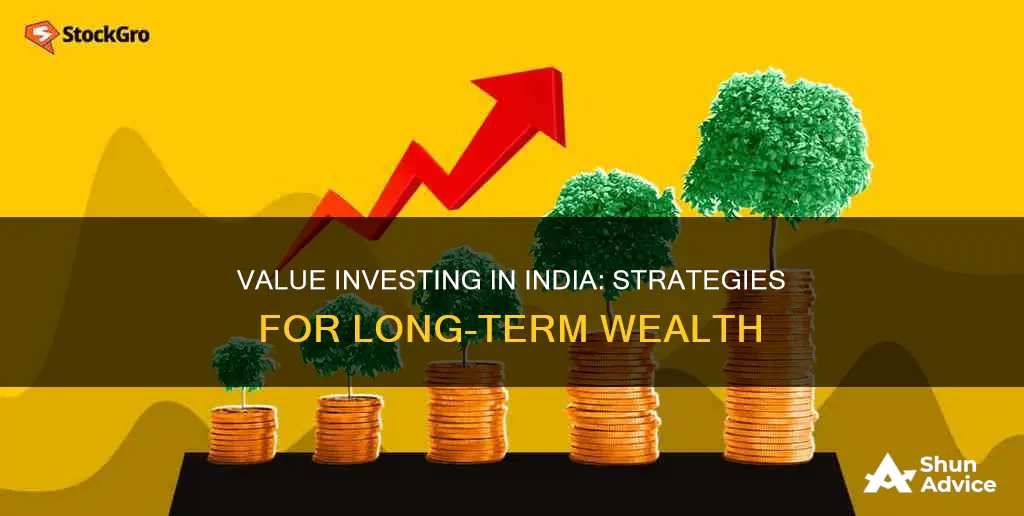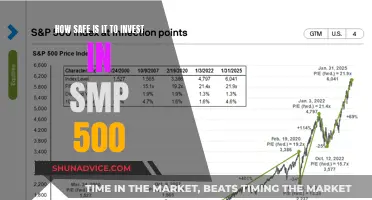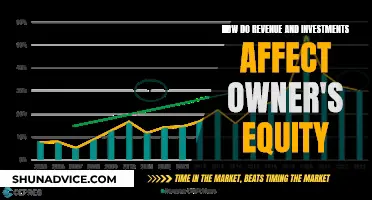
Value investing is a strategy of investment that involves buying stocks that appear to be undervalued, i.e., their current stock value is much lesser than the book or intrinsic value. Value investors believe that the stock prices are affected much more than they should be due to market movements, and that this change in price will not have a long-term impact on the company. When the company starts performing well, the stock price will shoot up, giving investors excellent returns.
The primary idea of value investing is simple and straightforward. If a value investor is of the opinion that a particular stock is undervalued due to market movements, then they will invest in it without a second thought. This is because the share price is lesser when compared to the company’s fundamentals and plans. They accumulate these stocks and hold them for a long period to make good profits.
Value investing is a proven strategy to build wealth. It has created huge wealth for many investors over the years, including legendary investors like Warren Buffett.
What You'll Learn

Understanding the basics of value investing
Value investing is a strategy of investment that involves buying stocks that appear to be undervalued, i.e., their current stock value is much lesser than the book or intrinsic value. The primary idea is simple: if an investor believes that a stock is undervalued due to market movements, they will invest in it without hesitation. This is because the share price is lower compared to the company's fundamentals and plans.
Value investing is based on the belief that the stock prices are affected much more than they should be due to market movements. This change in price will not have a long-term impact on the company, and their strong fundamentals and excellent plans will lead to improved performance in the future. As a result, the stock price will increase, providing investors with excellent returns.
The basic strategy of value investing can be summarised as follows: find an amazing company, calculate its true value (also known as intrinsic value), and pay less to purchase the stock (when the market is down or the stock is on sale). Since you bought the stock at a discount, you can make a profit by selling it when the price reaches its true value.
For example, if the true value of a share is Rs 200, but it is currently trading at Rs 120, then the stock is undervalued. Value investing strategies encourage investing in such stocks that are trading way below their true value. You then need to wait for their prices to appreciate and reach their actual intrinsic value to make profits.
Value investing is not just about finding undervalued stocks; it also involves holding them for the long term to make good profits. This strategy requires market knowledge and the ability to analyse a company's fundamentals and future profitability.
Three Fundamental Philosophies of Value Investing:
- Look for the True/Intrinsic Value: Value investors believe that stocks have an intrinsic or true value, and they use different valuation methods like discounted cash flow analysis to determine this concrete number. When the market value of the stock is below the calculated value, value investors purchase it, expecting the price to increase to its true value over time.
- Avoid following the Herd: Value investors avoid herd mentality and group thinking. They do not buy a stock just because everyone else is buying it. Their investment decisions are based on thorough analysis and research rather than following the latest trends or tips.
- Always have a "Margin of Safety": The margin of safety is a key concept in value investing, aimed at reducing risk and avoiding losses. Value investors give themselves a benefit of doubt by purchasing a stock with a margin of safety, i.e., buying it at a price lower than its calculated true value. This provides a cushion against potential losses and ensures that even if something goes wrong, their investment is protected.
Value Investing vs. Growth Investing:
Value investing differs from growth investing in terms of risk and return expectations. Value investing involves picking up stocks at a much lower price and staying invested for the long term to reap benefits. On the other hand, growth investing focuses on companies with high growth potential, and investors are willing to pay a high price for faster future growth.
Techniques for Stock Valuation:
There are two common approaches that value investors use for stock valuation:
- Relative Valuation: This approach uses financial tools like lower-than-average price-to-book value, a low PE ratio, or higher dividend yields to find undervalued stocks in comparison to their peers in the industry.
- Absolute Valuation: This approach uses techniques like Discounted Cashflow (DCF) and Dividend Discount Model (DDM) to determine the true value of stocks based on future cash flows and dividends.
Value Investing in India:
Value investing has been a proven strategy for creating wealth over the years, and it has worked successfully in India. Legendary investors like Warren Buffett and Benjamin Graham are well-known advocates of value investing.
However, it is important to note that not all forms of value investing will work in India, as the market dynamics and regulatory environment may differ from other countries. Additionally, the concept of value investing has evolved over time, and investors need to adapt their strategies accordingly.
Value investing is a disciplined and patient approach to investing that requires thorough research and analysis. It focuses on finding undervalued stocks with strong fundamentals and holding them for the long term to generate excellent returns. By understanding the basics of value investing and applying these principles in the Indian market context, investors can make informed decisions and build wealth over time.
Understanding Self-Employment Through Investment Management
You may want to see also

Fundamental analysis
When conducting fundamental analysis, investors often look at various financial ratios to compare a company's metrics with those of its competitors or industry averages. These ratios include the price-to-earnings (PE) ratio, price-to-book (PB) ratio, debt-to-equity (DE) ratio, current ratio, and return on equity (ROE).
Benjamin Graham, the father of value investing, emphasised the importance of a "margin of safety," which is the difference between a stock's intrinsic value and its market price. This concept protects investors from potential losses and provides a greater potential for profit.
Overall, fundamental analysis is a critical tool for value investors to identify undervalued stocks with strong fundamentals and growth potential. By combining quantitative and qualitative analysis and utilising financial ratios, investors can make more informed decisions about stock purchases and sales.
Strategies for Investing in Hedge Fund Managers
You may want to see also

Growth analysis
When conducting growth analysis, investors look for companies that are expected to grow faster than their peers or the overall market. These companies typically reinvest their profits into research and development, market expansion, or acquisitions, aiming for sustainable long-term growth.
Growth stocks are often associated with young or small businesses and are considered riskier investments due to their higher volatility. However, they offer the potential for significant returns, making them attractive to investors who are willing to take on more risk.
It is important to note that growth analysis is not just about identifying companies with high growth rates but also assessing their ability to maintain and sustain that growth over the long term. This includes evaluating the company's competitive advantage, market position, and financial health.
When conducting growth analysis, investors may use various tools and metrics, such as analysing financial statements, reviewing industry trends, and assessing the company's management team and their ability to execute growth strategies effectively.
By combining growth analysis with other aspects of value investing, such as fundamental analysis and intrinsic value calculations, investors can make more informed decisions about their investments, increasing their chances of achieving favourable returns.
Be Your Own Boss: Manage Your Investments Independently
You may want to see also

Value investing vs growth investing
Value investing and growth investing are two of the most well-known types of fundamental investing. Each has its own merits, and both seek to maximise the value of investment for investors.
Growth Investing
Growth investing focuses on companies that have registered better-than-average gains and are projected to continue with high growth rates. These companies are usually young or small businesses with high earnings potential. Growth stocks are more volatile and are accompanied by the possibility of sharp price drops due to negative news and market sentiments. They are also priced higher as investors are willing to pay a premium for them.
Value Investing
Value investing, on the other hand, involves seeking out companies that seem undervalued in the market but have strong fundamentals and the potential for growth. Value investors look for stocks that are trading at a discount and hold them for the long term to make profits. These stocks tend to be lower priced compared to their peers and are better suited for long-term investment horizons. They are also associated with lower levels of risk.
The key difference between the two strategies lies in their approach to risk and return expectations. Growth investing focuses more on future growth and is accompanied by higher risk, whereas value investing relies more on past facts, the company's current market value and intrinsic value, and is considered a lower-risk strategy.
However, it is important to note that there is no "right" or "wrong" strategy when choosing stocks, and the suitability of each approach depends on the investor's risk tolerance, financial objectives, and time horizon, among other factors. Many investors choose to combine both strategies to balance risk and return, and this combination is known as the "blend" style of investing.
Balancing Your Investment Portfolio: Strategies for Success
You may want to see also

Identifying a value stock
Value investing is a strategy of investment which involves choosing stocks that appear to have their current stock value much lower than the book or intrinsic value. The primary idea of value investing is simple and straightforward. If a value investor is of the opinion that a particular stock is undervalued due to market movements, then they will invest in it without a second thought. This is because the share price is lower when compared to the company’s fundamentals and plans.
- You invest in very well-established businesses with long histories of success.
- The stock must have a track record of consistent profitability. Here, the focus is not just on profitability but also on the consistency of profit growth over time.
- Stable revenue streams are a necessary condition. You may not see a sharp spike in sales, but even any sales contraction in the worst of times is limited.
- Dividend payments can be an added advantage although paying a dividend is not a sine qua non to qualify as a value stock or as a value investing approach.
Some useful valuation techniques are used to compare stocks from the same industry and analyse if it’s over or undervalued. Relative valuation multiples such as P/E, P/B, EV/EBITDA, and P/S are famously used. Another well-known valuation method is Discounted Cash Flows. This valuation style uses a number of parameters, right from free cash flows of the company to the cost of capital, to reach the final true value, which is then compared to the current market price of the stock to judge if the company is fairly valued.
Certain investors also look at the PEG ratio instead of PE, which compares the PE to the growth of the company. But not all multiples will give you the same value, hence certain investors use the blended valuation technique. It is the weighted average of various intrinsic values by different methodologies. It is important for an investor to see which valuation technique best applies depending on the company’s business model. For instance, for capital-intensive companies, it is best to use the EV/EBITDA multiple.
- Relative Valuation: Financial tools like a lower-than-average price-to-book value, a low PE ratio, or higher dividend yields are used.
- Absolute Valuation: Techniques like Discounted Cashflow (DCF), Dividend Discount Model (DDM), etc. are used to find out the true value of stocks.
Identifying value traps
When discussing value stocks, it is important to understand the risk of value traps. These are stocks that can look like value stocks but, once invested in, do not translate into higher prices. Here are some common situations that can produce value traps that value investors should be wary of:
- Cyclical industries stocks like the ones in engineering and construction. These cyclical stocks are slow movers and often quote at low P/Es due to this cyclical uncertainty and long down cycles.
- Stocks that emphasise intellectual property. For example, a pharma company may be minting money from a high-priced drug but may soon lose patent protection, leading to generics flooding the market and taking away the advantage.
A model portfolio
- Axis Bank: The third-largest private sector bank in India, with total assets of INR 11.75 lakh crore as of March 31, 2022.
- Bajaj Electricals: A market leader in consumer durables, with a product line that includes electrical appliances, fans, and lighting.
- Manappuram Finance: The country’s second-largest NBFC in the gold financing segment, with a presence in Micro-Finance, Vehicle Loans, and MSMEs.
- Computer Age Management Services (CAMS): India’s largest registrar and transfer agent of mutual funds, with an aggregate market share of approximately 70%.
- ITC: The largest cigarette manufacturer and seller in the country, operating in five business segments: FMCG Cigarettes, FMCG Others, Hotels, Paperboards, Paper and Packaging, and Agri Business.
Value investing requires a lot of research and analysis. It is not for investors who are looking for quick returns or who follow the hottest tips and fads in the market. It is a strategy that focuses on buying undervalued stocks of strong companies and holding them over a long period of time, and it can provide hefty returns if done right.
Investment Management: What You Need to Study and Know
You may want to see also
Frequently asked questions
Value investing is an investment strategy that involves buying undervalued stocks of strong companies and holding them over a long period. The aim is to profit from the difference between the stock's current market price and its intrinsic value, which is determined through fundamental analysis.
To identify value stocks, investors need to conduct fundamental analysis and research a company's financials, long-term plans, business principles, and management efficacy. It is also important to compare stocks within the same industry using valuation techniques such as relative valuation multiples (P/E, P/B, EV/EBITDA, P/S) and discounted cash flow analysis.
Value investing can offer bargain deals on strong companies that may be temporarily undervalued due to market movements or short-term factors. By buying these stocks at a discount, investors can profit when the market corrects and the stock price rises towards its intrinsic value. Value investing also provides a margin of safety, as the potential losses are limited if the investment turns sour.







